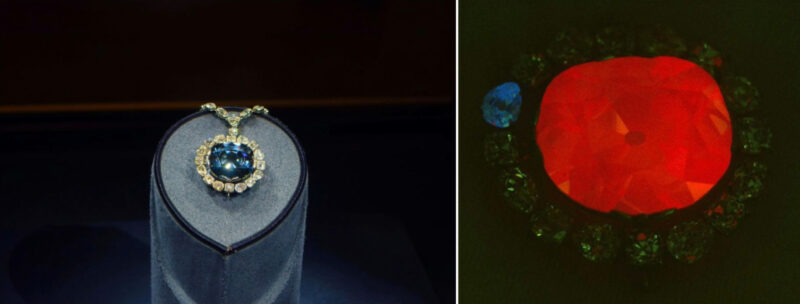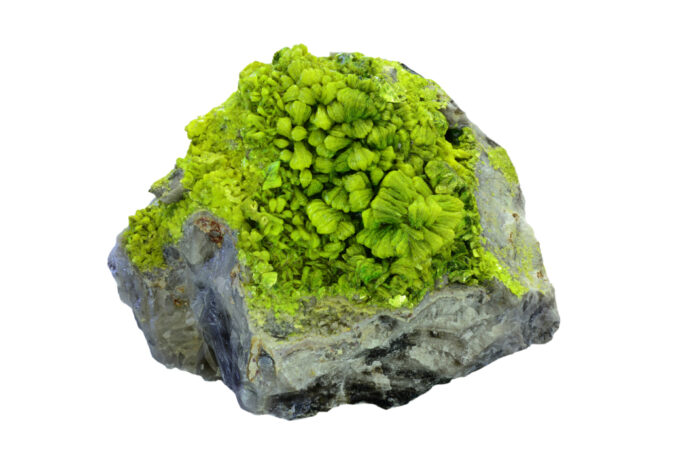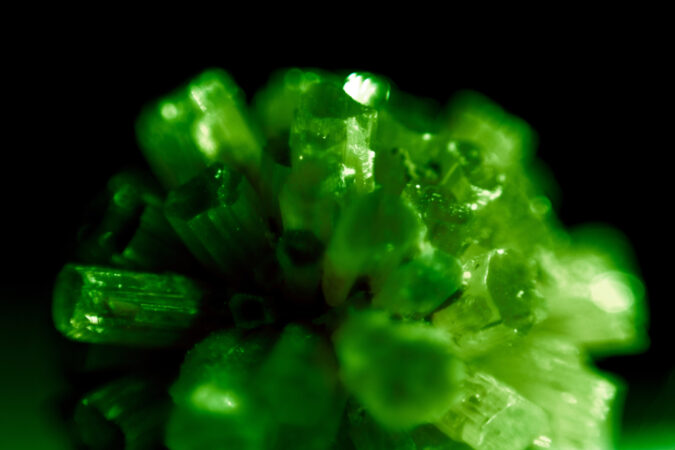Superman’s kryptonite doesn’t have a true equal on Earth
Its out-of-this-world glow is fiction, but UV light can give some Earth minerals a glow up

Superman’s big weakness is kryptonite, but there’s nothing quite like that green rock here on Earth.
CUM OKOLO/ALAMY
Superman is faster than a speeding bullet and more powerful than a train. His one weakness? Kryptonite, a radioactive mineral found on the fictional planet Krypton. A power stone that can sap the Man of Steel of his superhuman powers, kryptonite is often shown as a glowing green crystal.
Earth does have its own gleaming green minerals. Some are even radioactive. But these minerals don’t glow on their own like kryptonite. Instead, ultraviolet (UV) light gives these crystals their inner light. There are over 500 kinds of these minerals.
The glow happens because fluorescent minerals contain excitable atoms known as activators. When UV light hits these atoms, their electrons gain energy. The excited electrons jump up to a higher energy state. As they lose energy, they return to their former position. Some energy is lost as invisible heat. The rest is emitted as visible light.
Most of the minerals seen glowing on their own in movies “wouldn’t make much sense,” says Gabriela Farfan. She is the gem and mineral collection curator at the Smithsonian National Museum of Natural History. That’s in Washington, D.C. Fluorescent minerals need a steady energy source to keep them aglow. To keep their shine in a museum, for instance, these crystals are displayed with a UV lamp, says Farfan. Shutting off the lamp stops the glow almost immediately.
Some minerals phosphoresce. They continue to glow after they are removed from UV radiation. Their electrons stay excited for longer and release their energy more slowly.

In 2008, researchers found that one of the rarest jewels in the world has its own afterglow. It’s the Hope Diamond, a deep-blue stone housed at the Smithsonian. (In addition to being quite large, the diamond is famed for its supposed curse.) Under UV light, researchers found, this precious gem emits a red glow lasting several minutes. Excited boron atoms give the famous jewel this fiery hue.
Phosphorescent stones probably wouldn’t make good movie props, though. Some crystals can phosphoresce for days. But their shine is best viewed in dark settings. Seeing one glow in a lit room would be tricky, says Farfan.
An eerie green glow
Though kryptonite may outshine glowing rocks here on Earth, our planet boasts minerals in similar shades of unearthly green. Many uranium-containing minerals come in bright colors, notes Farfan. Even without UV radiation, “they kind of look like they’re poisonous,” she says.
Flick on a UV lamp and some of these minerals fluoresce a bright yellowish-green. Lime-green autunite is a source of uranium used for nuclear power. It’s also prized among rock hunters for its glow. Autunite fluoresces because of uranyl ions, says Ed Raines. He is the curator of the Mines Museum of Earth Science at the Colorado School of Mines in Golden. Uranyl consists of a positively charged uranium atom bonded to two oxygen atoms.

Autunite also contains water in its crystal structure. When autunite dehydrates, it gets converted to meta-autunite. This toxic mineral produces radioactive flakes. This dust can easily be rinsed off. It doesn’t produce radiation strong enough to penetrate intact skin. But inhaling or swallowing these flakes can be harmful. “If you were to get [the flakes] on your hands and pick up your peanut butter and jelly sandwich and eat that, you could be in trouble,” says Raines.
A real superpower
Earth’s glowing minerals won’t stop a superhero in his tracks. However, fluorescence can help experts identify valuable stones and even catch forgeries.
“Gemologists use it every single day,” says Farfan. Gemologists examine precious gemstones to determine their value. Cutting a stone for a piece of jewelry can make it hard to identify a gemstone by only its structure. Fluorescence gives gemologists tools to see features they can’t see with their eyes alone.
Testing a stone with UV light can reveal heat treatments used to brighten stones or epoxy used to fill cracks. Fluorescence can help sort out human-made from natural gems. Under short-wave UV light, for instance, many synthetic sapphires fluoresce a chalky blue. Natural sapphire rarely does the same. And certain gems glow different colors when exposed to UV light. This can help determine if a rare gemstone is fake.
“If you’re buying a very expensive piece of jewelry, you want to make sure that that actually is a sapphire [and] not a piece of glass,” says Farfan.

Kryptonite’s conundrums
In 2007, researchers discovered a mineral with a similar chemical makeup as the kryptonite from Superman Returns. Called jadarite, this dull white mineral fluoresces a pinkish-orange. News headlines dubbed it a real-life kryptonite.
But comparing kryptonite to any mineral found on Earth is impossible, says Raines. Chemistry, heat and pressure work in all sorts of ways to form minerals on and within a planet. Geologists would need to know the makeup of planet Krypton to figure out how these forces produce kryptonite.
And since no one has yet discovered a real-life counterpart to that fictional planet, kryptonite remains Superman’s secret.







